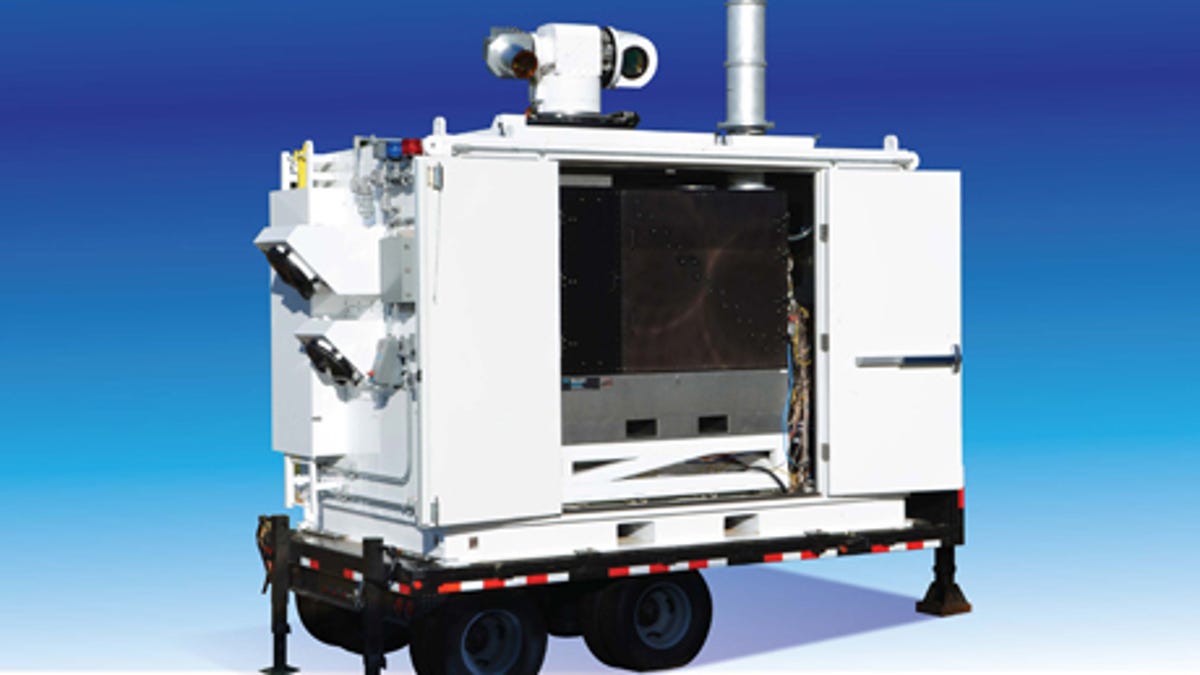Lockheed's ADAM enters the laser weapons stakes
But belay your Death Star wishes. The Area Defense Anti-Munitions system sports a very modest 10-kilowatt fiber laser and for now just shoots small fry.

Someday, somebody will bring an actual laser weapon to combat operations where it'll count. Until then, watch for more puttering about with the occasional field test of this or that prototype.
The latest manifestation of the eternal desire by the defense establishment for directed-energy weapons comes from Lockheed Martin, which yesterday brought word of its Area Defense Anti-Munitions (ADAM) system. ADAM's business end is a 10-kilowatt fiber laser that since August has been taking target practice against "representative" airborne threats.
The tally, it must be said, seems rather slight. Lockheed said that in the tests ADAM destroyed four small-caliber rocket targets in simulated flight at a range of approximately 2 kilometers (about a mile and a quarter) and "successfully engaged" an unmanned aerial vehicle in flight about 1.5 kilometers away.
That's the sweet spot for ADAM, which the company said was designed for short-range defense -- it's engineered to destroy targets up to 2 kilometers away, with a tracking range of more than 5 kilometers. When facing rockets, it works as a standalone system, and when taking on UAVs it uses an external radar cue.
For years, the military/industrial complex has been rife with efforts to cook up a practical laser weapon. The plans, though, have been scaled down over time from the hyperambitious Skyguard initiative and the fry-in-the-sky Airborne Laser program (to which Lockheed contributed the beam control/fire control elements). Nowadays, the emphasis is on more modest projects, including Boeing's truck-based HEL MD, Raytheon's Laser Area Weapons System, and Northrop Grumman's Firestrike and Maritime Laser Demonstrator.

